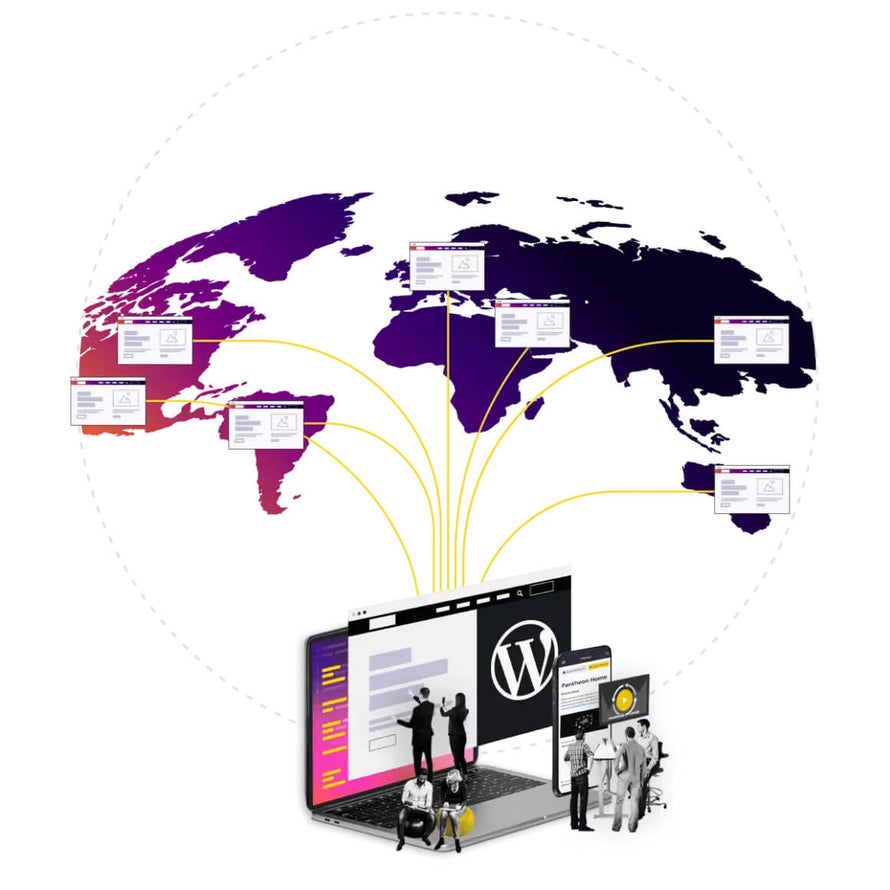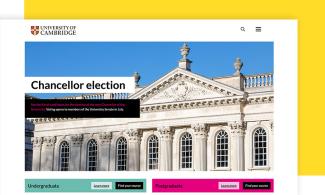Filters
Content Type
Topics
Essential Steps for a Comprehensive Drupal Security Audit
Did you know that a recent Drupal vulnerability allowed hackers to bypass file validation and upload malicious files to sites? This kind of exploit is a strong reminder of why it’s essential to regularly audit the security of your Drupal site.
The challenge with Drupal – and, in fact, with any highly customizable web application – is that security audits require more than just periodic automated scans. That’s because each customization introduces new potential security risks, so you can’t rely on a one-size-fits-all approach to protecting your site.
But don’t worry – we’ll guide you through a clear, step-by-step process for conducting a comprehensive Drupal security audit. We’ll also recommend useful tools and share expert insights to help you protect your site from emerging threats!
Essential Steps for a Comprehensive Drupal Security Audit
Every Drupal website is unique, with custom code, specific user permissions and various integrations. This complexity can make it challenging to create a one-size-fits-all security audit process. However, certain steps and tools are helpful for all Drupal sites and should be part of any security audit:
1. Use essential security modules: Start with modules like Security Review and Security Kit. Security Review automates vulnerability checks, while Security Kit (SecKit) strengthens your site against common Drupal threats like cross-site scripting (XSS) and cross-site request forgery (CSRF).
2. Keep Drupal up-to-date with Composer: Make sure Drupal core, modules and themes are always up-to-date. Using Composer (PHP dependency management tool) simplifies updates by managing the versions of your Drupal installation, which helps patch vulnerabilities. Composer's drupal/core-recommended package helps manage updates safely.
3. Audit and test user roles and permissions: Regularly review user roles and permissions, applying the principle of least privilege. This minimizes potential risks by ensuring users only have the access they need. Also, manually verifying user roles and permissions means users only have access to functionalities allowed by their roles, following the principle of least privilege. A useful test is attempting to access restricted paths like /admin/content as a lower-privileged user to verify that permissions are properly enforced.
Pro tip: Use automated testing frameworks like Behat for behavior-driven development to test user permissions.
4. Secure the database: Strengthen your site’s database security by reviewing configurations, using strong and unique database credentials, limiting database user privileges to essential operations, implementing encrypted connections to the database and regularly backing up the database and test restoration procedures. This protects data integrity, user privacy and overall site stability.
To make things easier for you, Pantheon enhances Drupal security with its Advanced Global CDN (AGCDN) and Web Application Firewall (WAF), offering features like geolocation blocking and IP blacklisting. It also automates core updates and backups, helping to keep your Drupal site secure without manual intervention.
Pro tip: It's best practice to test updates in a staging environment before applying them to production to prevent potential compatibility issues with custom code or modules.
5. Configure entity vulnerabilities: Drupal’s settings for content types, fields, views and permissions can leave your site exposed if not configured properly. For example, misconfigurations in Drupal’s role-based access control (RBAC) system can result in an access bypass issue. This happens when regular users gain unintended access to parts of the site’s back-end, allowing them to modify critical configurations or permissions.
Ensuring that roles and permissions are carefully reviewed and tested is important when preventing these kinds of attacks. For this, you can implement a configuration management strategy using tools like Drupal's configuration management system to track and review changes.
6. Identify and mitigate potential SQL and Twig template injection vulnerabilities: Begin with a thorough review of custom module code to identify raw database queries, especially those using dynamic SQL or direct user input without proper sanitization. It’s essential to verify the use of Drupal’s Database API with parameterized queries and confirm adherence to secure coding practices. Automated tools like SQLMap, alongside manual penetration testing, can help detect potential injection points by attempting to exploit input fields and URL parameters with malicious payloads. Reviewing database permissions also ensures the principle of least privilege is enforced.
For Twig template injection risks, auditors should inspect custom templates for unsafe variable outputs, such as unescaped {{ variable }} statements, and confirm the appropriate use of Twig’s built-in escape filters. Special attention should be given to any use of the raw filter, as it disables output sanitization and can introduce severe security risks if misused. Testing with template injection payloads like {{7*7}} or more advanced code snippets helps identify unauthorized code execution vulnerabilities.
7. Review Form API implementation: Drupal’s Form API is designed to securely manage web forms, but improper implementation can lead to significant security risks. Issues like XSS and CSRF can occur if form inputs aren’t properly sanitized or validated. Malicious scripts entered by users can execute harmful actions or steal sensitive data. Regularly reviewing and testing form implementations is critical to safeguarding against these vulnerabilities.
Pro tips:
- Avoid disabling Twig's auto-escaping feature.
- Be cautious with the |raw filter and ensure it is not applied to user-supplied data.
- When using Drupal's Form API functions for input validation and sanitization:
- Ensure forms include Drupal's built-in CSRF tokens by using drupal_get_form() or \Drupal\Core\Form\FormBuilder.
- Validate and sanitize all user inputs on both client and server sides.
- Use the Webform module where possible instead of creating your own custom form.
8. Configuration assessment: Reviewing your site’s configurations includes security settings, access controls and file permissions. Any misconfigurations could leave your site vulnerable to unauthorized access. The Security Review module can automate this process by scanning for weak file permissions and improper user access configurations. Also, think about using modules like Paranoia to detect and restrict unnecessary permissions.
9. Analyzing modules and themes for vulnerabilities: Every core and custom module, as well as any themes installed, should be analyzed for potential security weaknesses. Tools like PHP_CodeSniffer are helpful in identifying violations of coding standards and potential vulnerabilities in PHP code. This ensures that custom code or themes follow best practices and don’t introduce new risks.
Additionally, you can:
- Use the Coder module, which includes security reviews specific to Drupal.
- Implement static analysis tools like SonarQube with security plugins to detect potential vulnerabilities.
- Regularly check for updates and security advisories for all contributed modules and themes via Drupal's security advisories.
Leveraging Security Tools and Modules for Drupal Audits
While we’ve already covered essential tools like Security Review and Security Kit, there are additional tools and modules that can further strengthen the security of your Drupal site.
For example, securing user logins is an important step in protecting your application. Drupal has several modules specifically designed to improve login security: Login Security helps limit failed login attempts, while Two-Factor Authentication (TFA) adds an extra layer of protection by requiring a second method of verification. Additionally, the Password Policy module enforces stricter password rules, ensuring that users create strong, complex passwords, which reduces the risk of unauthorized access.
Beyond Drupal’s ecosystem of security modules, external tools are also crucial for thorough audits. DroopeScan, an open-source security scanner, can identify vulnerabilities in Drupal core and contributed modules. It detects issues like SQL injection, remote code execution and other exploit vectors by cross-referencing public databases such as the CVE (Common Vulnerabilities and Exposures) database. This gives you insight into vulnerabilities that may not be addressed by Drupal modules alone.
Another valuable tool is Nikto, an open-source web server scanner that goes beyond your Drupal site to check your server environment. It scans for dangerous files, misconfigurations, outdated software and other potential security issues that might be missed by Drupal-specific modules.
Enhancing Drupal Security With Pantheon’s WebOps Platform
Pantheon is more than just a managed hosting environment for Drupal – it’s also a comprehensive security management platform with an integrated development workflow. It offers powerful features designed to handle the complex security needs of Drupal websites, all while making routine tasks like updates and backups easier to manage.
Advanced Global CDN
Brandfolder Image

Pantheon’s Advanced Global CDN uses a network of servers distributed across various geographic locations to deliver content more efficiently to end-users. Static assets are cached at edge locations, reducing the load on your server and enhancing response times. This may lessen the effects of a DDoS attack by preventing overwhelming traffic from reaching your origin server easily.
Web Application Firewall (WAF)
WAF is specifically tailored to address the types of threats Drupal sites often face, including SQL injection, XSS, CSRF and remote code executions. The WAF also filters incoming traffic and blocks these kinds of malicious activities, adding an extra layer of protection to your Drupal application.
Automation and Development
Managing updates can be one of the more time-consuming tasks in maintaining a secure Drupal site, but Pantheon simplifies this with automated core and module updates. The Autopilot features automates the process of updating Drupal core and contributed modules. It runs automated visual regression tests to detect any issues resulting from updates before they are deployed to the live site.
Plus, Pantheon provides automated backups and restore points, enabling quick data recovery in the event of a security incident. These backups can serve as a form of version control, letting you revert to previous states if new updates cause issues or security flaws.
And with Pantheon’s staging environment, developers can test updates before pushing them live, minimizing the risk of bugs or vulnerabilities being introduced into the production environment.
Elevate Your Drupal Security Strategy With Pantheon
Implementing comprehensive Drupal security measures can be challenging and time-consuming, especially when managing everything manually.
However, by following the steps outlined in this article, you can simplify the process while strengthening your site’s defenses. With Pantheon’s 24/7 support from Drupal security experts, it becomes more than just a hosting solution – it’s a partner that transforms security from a burden into a competitive advantage.
Get started with Pantheon and elevate your Drupal security strategy now!


